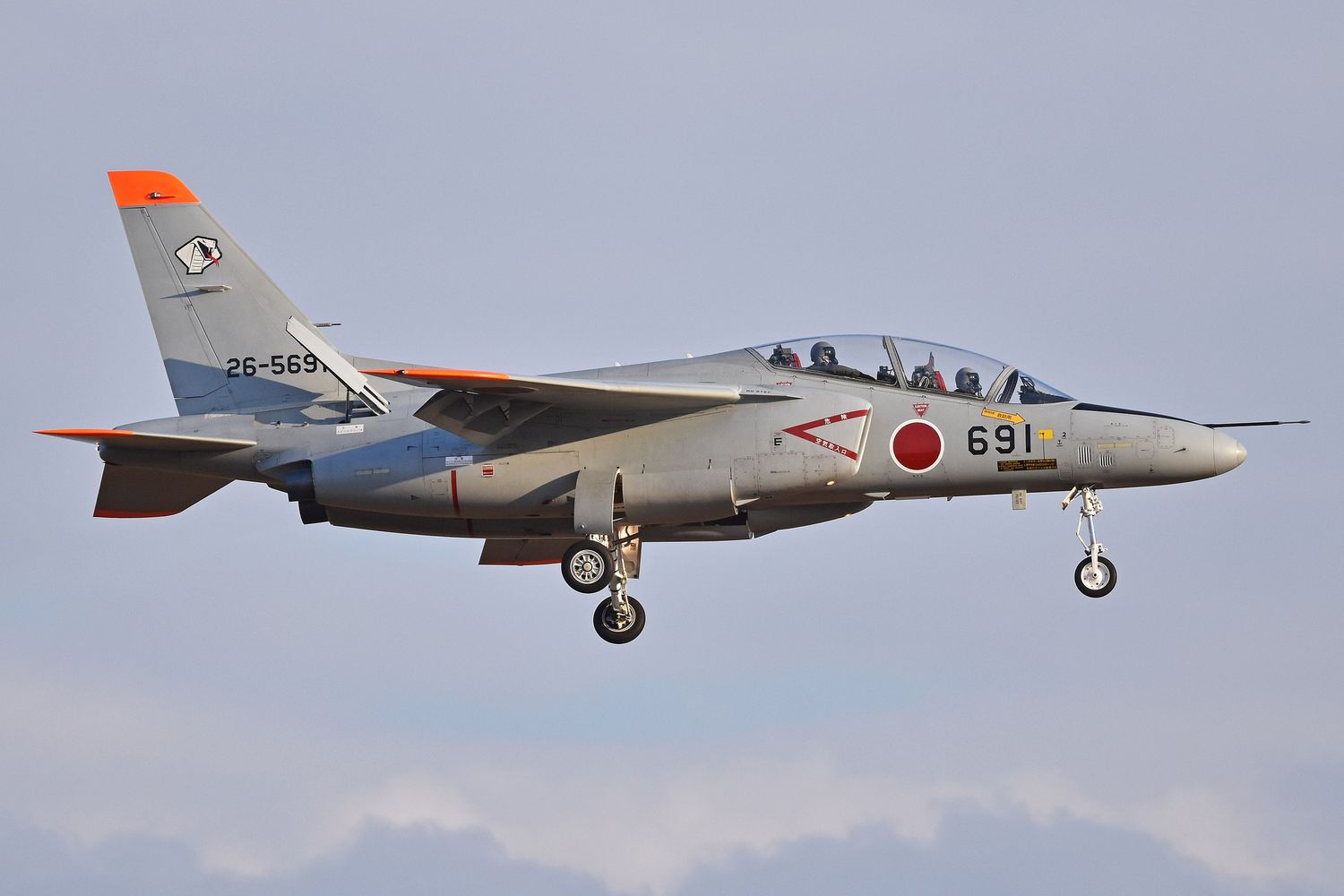The governments of Japan and the United States are seeking to jointly develop an advanced trainer aircraft to replace the Japan Air Self-Defense Force’s (JASDF) Kawasaki T-4.
According to Japan’s Manichi newspaper, Prime Minister Fumio Kishida will visit the U.S. as a guest of state and intends to reach an agreement and put it into a final document at a summit with President Biden scheduled for April 10 in Washington. This would be the first time Japan and the United States would jointly develop a trainer aircraft. In addition to reducing production costs, the aim is to strengthen cooperation and interoperability between the Japanese Self-Defense Forces and the U.S. Armed Forces through the use of common aircraft from the training phase.
Kawasaki T-4
The Kawasaki T-4 is a Japanese subsonic intermediate trainer aircraft developed and manufactured entirely in Japan by Kawasaki Heavy Industries. Its sole operator is the Japan Air Self-Defense Force (JASDF).
In addition to its primary training mission, the T-4 has been used by the JASDF’s Blue Impulse aerobatic team, as well as in liaison duties with most combat units. The first XT-4 prototype flew on July 29, 1985, while the first production aircraft was delivered in September 1988.
The T-4 design had to satisfy aspects of the JASDF training regime that was previously performed by multiple aircraft. As such, the aircraft had to perform well in various transonic regimes, in addition to achieving a high level of maneuverability, relatively low operating cost and high levels of reliability.
Easy to fly and economical to operate, the T-4 is comparable to several widely exported jet trainers, such as the Franco-German Dassault/Dornier Alpha Jet and the British BAE Systems Hawk.

Fifth-generation training and beyond
Despite the good qualities of the T-4, more than 35 years have passed since its entry into service and its design shows evidence of obsolescence.
Advances in artificial intelligence (AI), communications systems and the significant improvement in sensor performance make air combat more complex and the skills required of pilots more demanding. This is why the JASDF points out that the T-4 is no longer a suitable instrument to prepare future pilots for the stealthy F-35, as well as for the future Japanese sixth-generation fighter emerging from the GCAP program (joint development with the UK and Italy).
See also: Airbus CEO thinks Europe should merge its sixth-generation fighter programs
El T-7AJ?
As is well known, the U.S. Air Force (USAF) has already selected the T-7A Red Hawk as its next-generation advanced trainer aircraft, which was developed by Boeing and Saab to replace the aging Northrop T-38 Talon. Under the $9.2 billion contract signed in 2018, Boeing will build 351 of these aircraft for the USAF. The T-7 is designed to replicate the capabilities of fifth-generation fighters such as the Lockheed Martin F-35, and to facilitate the training of new pilots for fighter and bomber aircraft, which would meet the JASDF’s requirements for an eventual T-4 replacement.

If Tokio were to join the USAF’s caboose, it is clear that the Japanese industry will have little to contribute to the development of the T-7A, which despite delays is almost completed and awaits the start of series production. Possibly that is precisely the objective, to get a good deal in Washington for the licensed production of the Japanese version of the Red Hawk (T-7AJ?), for an aircraft tailored to their needs but with the highest degree of compatibility with the USAF possible, minimizing the cost in own resources, which can be better employed in disruptive programs such as the GCAP.
Another (but similar) option is for Japanese companies to partner with the team formed by Korea Aerospace Industries (KAI) and Lockheed Martin (LM), which are offering the U.S. market an upgraded version of the FA-50/T-50. Beyond the T-7A, KAI estimates that the U.S. Air Force and Navy plan to introduce some 280 and 220 (respectively) advanced/tactical combat trainer aircraft, starting in 2024/2025.

The U.S. could be interested in offering these aircraft to allied nations in a light fighter version, as happened with the Northrop F-5 Tiger from the Freedom Fighter program. But for Japan, relations with South Korea are historically difficult, and while they are improving greatly in the shadow of the Chinese threat, it does not seem very likely that they will end up partnering for a Defense program for now.


Comentarios
Para comentar, debés estar registrado
Por favor, iniciá sesión